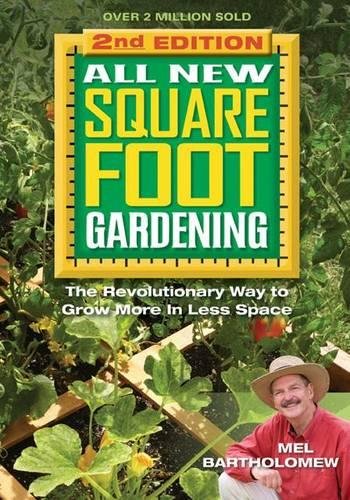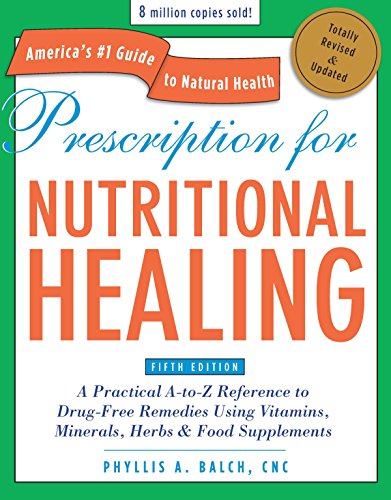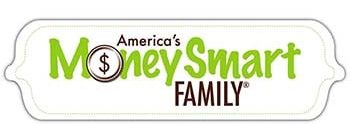We’re always looking for easy ways to save money & eat healthier. And to be more aware of the nutritional value of the foods we buy and eat.
Here are 12 ways can we save money & eat healthier without going to extremes.
It’s a well-known fact that some of the most common New Year’s Resolutions are to lose weight and to get finances in order.
We’re hoping that this blog will inspire you on both fronts if you’ve made either of these resolutions this year. You can lose weight by eating healthier and you can eat healthier without spending a fortune! So let’s start eating healthier for less!
Save Money & Eat Healthier Means Use Less Sugar
In 1822 the average American consumed 3285 grams of sugar each year—7.25 pounds. That’s like consuming the amount of sugar contained in one 12-ounce can of soda, once every 5 days.
Today we each consume about 55,845 grams of sugar each year (about 124 pounds). Forbes made a great infographic on this topic.
As a nation increased sugar consumption and other highly processed foods are taking us down a path of poor health. Check out this Huffington Post article if you don’t believe us.
We like sweets just like most of you. Chocolate chip cookies, Heath bars, Dove dark chocolate, chocolate pudding . . . pretty much anything containing chocolate is a weakness for us. But we have come up with some painless ways to reduce our sugar consumption.
1. Modified Recipes
We’ve successfully reduced (by a little bit) the amount of sugar used in several recipes and found the taste just as enjoyable. Honey and Stevia can also be used as substitute sweeteners.
Punch Recipes: Steve recently mixed up a Pineapple Lemonade punch recipe for a party we were hosting. He cut the recommended sugar amount in half. We served lots of other drinks (spiced cider and herbal iced tea) but the punch was a huge hit and disappeared quickly.
Oatmeal: In the past, we’d put a huge tablespoon of sugar on our oatmeal or cream of wheat. Now, we grab a handful of frozen cherries, strawberries, blueberries or other fruit we have stored in our freezer and use them in place of the sugar.
Do your own testing by slowly reducing the amount of sugar you put in recipes.
2. Cold Cereal
We made a rule when our kids were young that when we have cold cereal (about 2 times each week) we had to mix a healthy (unsweetened cereal) with a sugary cereal. We all have enjoyed this rule.
3. Drink More Water (and better water)
If you drink a lot of soda, try substituting a glass of water a couple of times each day. Drinking water at meals has become the norm in our home. We also carry water bottles with us wherever we go.
Several years ago we removed our Reverse Osmosis system and installed a 3-Stage Water Purification system (for about $100) and have great-tasting water all of the time.
We eliminated the reverse osmosis system because it took up too much space under the sink AND it wasted 4 times as much water as it produced. (We learned about RO wastewater data from multiple sources including AllianceForWaterEfficiency.org)
For every gallon of purified water your reverse osmosis system produces, it will likely have used roughly four gallons.
American Home Water and Air
Of course, you could skip the filtration system and just buy bottled water. But bottled water has its pros and cons too.
Pros: Usually good quality filtered water. It’s very convenient. It’s readily available.
Cons: On average it costs about $1.22 per gallon (when purchased in individual bottles). That’s about 2000 times more expensive than tap water.
Grocery Store Dispensers: Yes, you can fill up a 5-gallon bottle at the grocery store for between $.25 and $.50 per gallon, but lugging that much water isn’t easy.
Plastic waste: Americans trashed more than 50 billion plastic water bottles in the past year. Only about 23 percent of them were recycled. Disposable water bottles are becoming an environmental nightmare.
We recommend using a water filter in your home and buying a good quality (non-BPA) plastic water bottle (CamelBak and Nalgene are our favorites).
Health Note: Just be sure to thoroughly clean it at least once each week to remove bacteria from around the rim and inside the bottle.
RELATED ARTICLE: Brown’s Gas – Hydroxy – Health Hoax or Truth
Save Money & Eat Healthier Means More Fruits & Veggies
Everyone knows that fresh fruits and veggies contain more good nutrients and fiber than potato chips or other prepared food. But to many people, they just aren’t as appealing. Here are some ways we have made them more attractive to our family.
4. Spend Less — Buy what’s in Season.
Because produce can now be easily imported from other countries or regions, you can buy apples and oranges all year long. But by far the least expensive way will be when you can buy locally grown produce in season.
Here’s an overview of seasonal produce. Check with your produce manager or local county extension service for more exact information for your area.
Summer: Melons, peaches, nectarines, apricots, plums, berries, squash, and corn.
Fall: Apples, grapes, pears, peppers, onions, and potatoes.
Winter: Oranges, lemons grapefruit, and pineapples.
Spring: Strawberries, artichokes, and asparagus.

5. Focus on Cleaner Fruits and Veggies
If you want to avoid pesticides and GMO types of foods follow EWG.org (Environmental Working Group) guidelines for:
– The Dirty Dozen (fruits and veggies to minimize that are likely to be treated with pesticides) and
– The Clean 15 (fruits and veggies to focus on – as they are heartier and typically DON’T get treated with pesticides).
EWG.org isn’t saying to “never eat” food from the dirty dozen. Here’s what their FAQ page says about it:
“We definitely recommend eating produce from the Dirty Dozen™ list rather than foods or snacks that are not as healthful, such as fat-, sugar- or additive-laden processed foods. And by choosing produce on the Clean Fifteen™ list, you can have all the benefits of eating more produce while reducing your exposure to pesticides.”
6. Spend Less Buy Whole Foods
We know it’s convenient to pick up a package of “baby carrots.” They’re bite-sized and they’re washed. But they are also highly processed, have some unsavory chemicals used to keep them looking fresh, AND cost 300 percent more than bulk or bagged carrots.
Grocers charge a premium when they pre-cut, chop or mince produce for you. Processing and storing your less expensive fruits and veggies do take a little time, but the savings can be huge.
7. Ad Match Saves Money
Another way to save on produce is to use Ad Match at Target. By finding the lowest advertised prices at grocers in your area you can pick up lots of fresh fruits and veggies in one shopping trip.
RELATED ARTICLE: How Long Can Eggs Last Unrefrigerated?
8. Produce Rescues Save Money
In Phoenix and Tucson, there are a couple of organizations that buy semi-trucks full of produce headed to the landfills because of overproduction or other situations. The semis come to local churches and allow people to purchase 60 pounds of produce for $10.
PowWow – Produce on Wheels With Out Waste
If you’ve heard of a similar type of program in your area, please send us an email or leave a comment below.
9. Farmers Markets and Co-ops
Most cities have weekly farmers’ markets at least part of the year. A friend told us that showing up just as most vendors are closing up for the day has yielded them steeply discounted fruits and veggies.
10. Stocking UP on In-Season Produce
Buying in-season produce can go a long way to eating healthier and saving money.

Eat Organic by growing your own. Plant some fruit trees or a garden. There are varieties of dwarf fruit trees that can be planted in containers for those who live in smaller homes. Learning to grow your own veggies is a rewarding and healthy option. “Square Foot Gardening” by Mel Bartholomew is our go-to guide for keeping it simple and productive.
RELATED ARTICLE: Eating Organic on a Budget
We spoke in Ohio a few years back and someone mentioned to us that they hadn’t visited their garden in 2 weeks. All Annette could think was she’s a lucky gal, in Arizona, a garden is dead in one Summer day if it isn’t watered. The climate is right and there’s enough rainfall in Ohio to hardly have to tend a garden at all.
If you have good weather for growing things, do it! Every place can grow something. Just find out what grows in your area and plant something!
11. Save money & Eat Healthier Means Sneak in More Fiber
According to medical professionals, we should be consuming 25 to 38 grams of fiber each day. But the average American is consuming far less – more like 10 to 15 grams.
Our highly processed and fast food diet has led us to higher rates of constipation, diverticular disease, and hemorrhoids. Beyond these “minor” problems, lower fiber intake has been implicated in increases in colon cancer, high cholesterol, weight gain, and higher blood sugar.
But is the only way to get enough fiber to eat bran muffins or bran flakes?
Be Sneaky about eating healthy
Years ago Annette read the book, “Confessions of a Sneaky Organic Cook (Or, How to Make Your Family Healthy When They’re Not Looking!).”
Author Jane Kinderlehrer’s premise is that when we’re cooking we can add or substitute more healthy ingredients to recipes without it being noticeable, and in the process fill our food with the vitamins, minerals, and enzymes that have been depleted through the production process.
We’ve been sneaking bran into things like:
- Meat Loaf
- Meat Balls
- Pancakes
- Bread
- Muffins
- Hot Cereal
We buy bran from Sprouts a local health food store and keep it in glass jars in our refrigerator.
Naturopathic Options for Healthy Living
We’ve always been focused on learning how to maintain our health through nutrition. Having dealt with childhood asthma with one of our adopted kids, we won the battle through the careful use of herbs, hot baths, and bronchodilators.
We’ve stayed healthier and recovered faster from flu and colds by taking herbs like Echinacea, Cats Claw, and Pau D’Arco.
Steve has conquered severe allergies by building up his immune system. Years ago, if he mowed the lawn, even with a breathing mask on, he’d be wheezing and sneezing for at least a day. Now he mows the lawn without protection and experienced no repercussions.

Our “go-to” guide is The Prescription for Nutritional Healing by Phyllis Balch.
12. Vitamins / Herbs
We buy most of our herbs and vitamins from Puritan’s Pride – during one of their Buy One Get Two Free sales.
13. Essential Oils
Daughter Becky has found great benefit for all of us through the use of essential oils – her go-to source is Rocky Mountain Oils.
But you can also find top-rated homeopathic essential oils on Amazon also. This group of essential oils is 4-star rated or better and costs less than $25 per item.

Step by Step to Getting Healthier
If you have made a goal to get healthy this year — do it in baby steps. Don’t attempt a radical change that’s unsustainable or unaffordable. Learn about one area – like eating more fruits and veggies, or getting more fiber (you’ll be on track if you increase your produce intake); or work on building your immune system.
Step by step you’ll find better health and happiness in the New Year.


I don’t know if this really works, but I’ve had a couple of folks recommend a spoonful of locally produced honey (whatever is produced in your area). Supposedly helps with allergies, due to the bees and pollination?
We’ve heard the same thing about locally produced honey. Could be a good idea or it could be a way to boost sales for the local producers.
There are several no sugar cereals you can get at the regular grocery stores. We get grape nuts, Uncle Sams (a wheat flake cereal, Post brand shredded wheat or the generic version and put them in a large container with a 48 oz. container of rolled oats (not cooked), and mix them up. Then we top them with some fruit like banana and some frozen berries. Very filling and healthy. We also have no meat night meals like vegetable soup, or a baked potato bar–cheap and healthy.
Sheri, You are so right about the low/no sugar cereals at the store. Love the idea of meatless dinner meals. Thanks for sharing your healthy eating habits with us.
Ruby’s Pantry is another organization that gathers food about to expire from grocers and sells it to anyone for $20 for 80 lbs of food.
Thanks for sharing the info about Ruby’s Pantry. They have dozens of locations for food distribution in Wisconsin and Minnesota. Check out this page for locations
What a great post, full of really useful information. I’g going to look into healing allergies the natural way as you recommend, it sorted great !
Hope it works as well for you as it did for us! Please let us know if you have any questions!
Steve